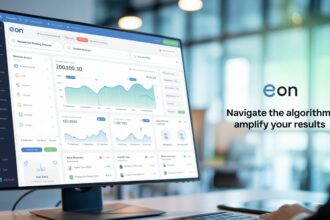In the fast-trading world of today, it is as important for traders to be mindful of their costs as it is for them to make the right move in the market. A brokerage calculator ensures that traders know exactly what transaction costs, taxes, and other costs accompany trading most of the time. Such tools allow young professionals who are exploring markets for the first time or planning to open a demat account to invest wisely. Let us consider four practical scenarios in which you can quietly save money, all thanks to the brokerage calculator.
1. Assessing Pre-trade Costs
Sometimes, the excitement of placing a trade overwhelms traders, causing them to overlook the associated costs. Brokerage fees, STT, GST, stamp duty, SEBI charges, and other such costs cut profits or inflate losses. This is where a brokerage calculator details the costs before you go ahead and click buy or sell. Let’s say you plan to buy shares worth ₹1,00,000 during the normal trading hours in India, and you want to find out the deductions made by buying via a brokerage calculator; you’ll see the exact deductions in no time and understand the real return potential. Before those obnoxiously unexpected catches that traders too often get caught up on while piloting new trades set in: “Now why did this happen?”
2. Planning Trades on Market Holidays
Many young professionals are quite unfamiliar with how mcx holidays or simply stock market holidays affect their trading plans. For example, these days will have low activity in the market before or after them, translating to large spreads or erratic price movement. You should prepare to use a brokerage calculator to analyze your trade costs and possible gain or loss scenarios before such events. This helps you avoid the instinctive rush that results as well as manage your funds better. New Demat account holders often know too little of this, but such tools encourage better-informed choices in trading.
3. Comparing Brokerage Between Different Segments
Many online trading platforms impose varying brokerage rates on segments like equity delivery, intraday, futures, and options, among many others. For instance, stocks indexed or traded in commodities through futures might attract different brokerage charges compared to those charged for normal stock trading. Through the brokerage calculator, you can easily compare the costs across the segments that reveal just where money is going for your benefit. If, say, you actively trade in futures or options but never bother to find out the complete cost structure, then these charges can quietly eat into your profits. Such a comparison forms part of choosing the right broker based on your trading needs when planning to open a demat account.
4. Calculation of the Break-even Point
Many new traders are only concerned with market trends and often forget to consider the break-even point of their trade. Break-even means the price at which your trade meets all of your costs and you earn neither profit nor loss. With a brokerage calculator, you can easily reflect transaction costs, taxes, and other fees in the real break-even point that helps you set realistic prices, especially in trades with short reaction periods, like when trading hours in India. Traders fully understand these numbers and will avoid hasty commitments that can lead to unnecessary losses.
Conclusion;
Understanding hidden costs becomes vital for young professionals entering the stock market, either through direct trading or by deciding to open a Demat account. However, brokerage calculators are simple yet powerful tools that make hidden costs easy to understand. They enable better planning of trades, prevent nasty surprises, and improve financial management, especially considering that such market holidays as mcx holidays can affect trading patterns. By using such tools wisely, traders can approach the markets with clarity and confidence, building habits that help in long-term financial management.







